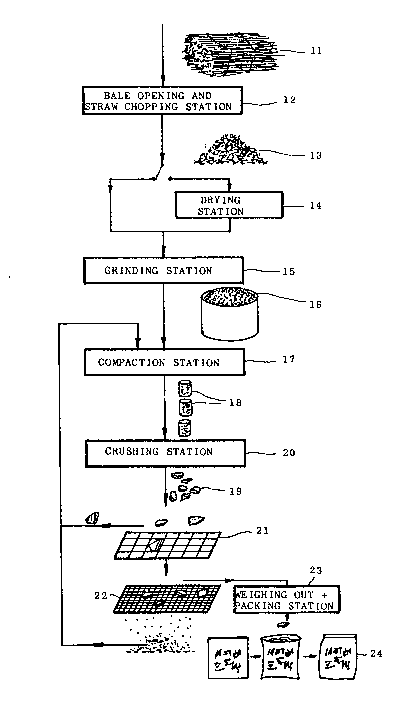Some of the information on this Web page has been provided by external sources. The Government of Canada is not responsible for the accuracy, reliability or currency of the information supplied by external sources. Users wishing to rely upon this information should consult directly with the source of the information. Content provided by external sources is not subject to official languages, privacy and accessibility requirements.
Any discrepancies in the text and image of the Claims and Abstract are due to differing posting times. Text of the Claims and Abstract are posted:
| (12) Patent: | (11) CA 1307392 |
|---|---|
| (21) Application Number: | 1307392 |
| (54) English Title: | LITTER FOR SMALL ANIMALS |
| (54) French Title: | LITIERE POUR PETITS ANIMAUX |
| Status: | Expired and beyond the Period of Reversal |
| (51) International Patent Classification (IPC): |
|
|---|---|
| (72) Inventors : |
|
| (73) Owners : |
|
| (71) Applicants : |
|
| (74) Agent: | SMART & BIGGAR LP |
| (74) Associate agent: | |
| (45) Issued: | 1992-09-15 |
| (22) Filed Date: | 1988-09-21 |
| Availability of licence: | N/A |
| Dedicated to the Public: | N/A |
| (25) Language of filing: | English |
| Patent Cooperation Treaty (PCT): | No |
|---|
| (30) Application Priority Data: | ||||||
|---|---|---|---|---|---|---|
|
Abstract of the Disclosure.
For producing litter for small animals and more especially litter
of cats strsw is firstly ground to produce powdered straw whlch is
then pressed to form briquettes and the latter are broken down into
irregular fragments wlth dimensions of the order of a few
millimeters and which are very well tolerated by the animals, have a
high absorbency and easily disposed of.
Note: Claims are shown in the official language in which they were submitted.
Note: Descriptions are shown in the official language in which they were submitted.

2024-08-01:As part of the Next Generation Patents (NGP) transition, the Canadian Patents Database (CPD) now contains a more detailed Event History, which replicates the Event Log of our new back-office solution.
Please note that "Inactive:" events refers to events no longer in use in our new back-office solution.
For a clearer understanding of the status of the application/patent presented on this page, the site Disclaimer , as well as the definitions for Patent , Event History , Maintenance Fee and Payment History should be consulted.
| Description | Date |
|---|---|
| Time Limit for Reversal Expired | 2003-09-15 |
| Letter Sent | 2002-09-16 |
| Grant by Issuance | 1992-09-15 |
There is no abandonment history.
| Fee Type | Anniversary Year | Due Date | Paid Date |
|---|---|---|---|
| Reversal of deemed expiry | 2001-09-17 | 1997-09-12 | |
| MF (category 1, 5th anniv.) - small | 1997-09-15 | 1997-09-12 | |
| MF (category 1, 6th anniv.) - small | 1998-09-15 | 1998-05-29 | |
| Reversal of deemed expiry | 2001-09-17 | 1998-05-29 | |
| Reversal of deemed expiry | 2001-09-17 | 1999-09-08 | |
| MF (category 1, 7th anniv.) - small | 1999-09-15 | 1999-09-08 | |
| Reversal of deemed expiry | 2001-09-17 | 2000-07-20 | |
| MF (category 1, 8th anniv.) - small | 2000-09-15 | 2000-07-20 | |
| MF (category 1, 9th anniv.) - small | 2001-09-17 | 2001-06-12 | |
| Reversal of deemed expiry | 2001-09-17 | 2001-06-12 |
Note: Records showing the ownership history in alphabetical order.
| Current Owners on Record |
|---|
| SUD-CHEMIE AKTIENGESELLSCHAFT |
| Past Owners on Record |
|---|
| WILHELM PIROTTE |